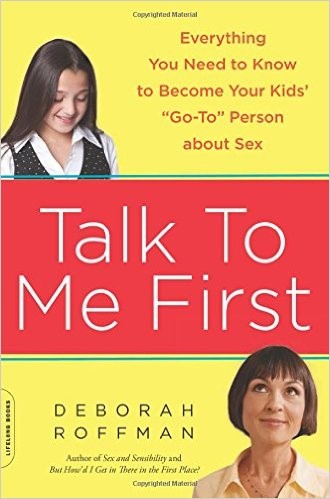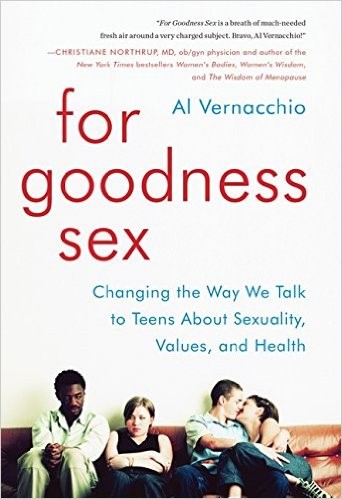How Do LBGQ Couples Become Parents?
This video explains the many different ways LBGQ+ couples have babies! There are many ways people can have a family, such as adoption, raising step-children, fostering, artificial insemination, surrogacy or other options! [AMZ-096]
Youth
You may know that if two people who are not the same sex have unprotected penile-vaginal sex, there is a chance that the joining of a sperm and ovum, or egg, could result in reproduction or making a baby. But how do LGBTQ couples become parents?
LGBTQ couples may choose to adopt, become foster parents or parent a stepchild. They might also consider something called artificial or alternative insemination or another procedure called “in vitro fertilization” (IVF). They may also have another person carry a baby for them, which is called surrogacy, or they may choose co-maternity where one partner’s egg is fertilized and implanted into the other partner’s uterus. Couples who are not LGBTQ also use many of these ways of becoming a parent.
In the end, what’s important is that there are many different ways that people who want to become parents can become parents.
FAQs
For a pregnancy to form, a sperm and an egg have to join, which typically happens through penile-vaginal sex. However, there are medical procedures that can help a sperm and egg join, such as artificial or alternative insemination and in vitro fertilization (IVF). Once the egg and sperm join, one of the partners with a uterus would carry the pregnancy. In some cases, a person called a “surrogate” would agree to carry the pregnancy.
Some people may choose to get pregnant by having sperm—from a partner or sperm donor—placed into the uterus during ovulation. This is called artificial or alternative insemination, and it’s a process that LGBTQ and heterosexual couples may use to start a pregnancy.
During IVF, medical providers use medicines and different medical procedures to help a sperm fertilize an egg outside of the body and to help that fertilized egg then implant in the uterus. IVF has many steps and can take several months. LGBTQ and heterosexual couples may use this process to start a pregnancy.
Parents
Young people may hear myths or be curious about how LGBTQ couples become parents. It’s important that parents and educators provide medically accurate information about the different ways—beyond penile-vaginal intercourse—that LGBTQ and heterosexual couples may use to become parents.
Some couples may choose to adopt or become foster parents. Until recently, many states in the U.S. would not allow LGBTQ couples to adopt. Partners in a couple may also bring children from a previous relationship that didn’t work out into a blended-family, where partners become stepparents to children from the previous relationship.
LGBTQ couples might also consider artificial or alternative insemination, where one partner gets pregnant by having sperm—from a sperm donor—placed into the uterus during ovulation. (This is a process that heterosexual couples may also use to become parents—with sperm provided from one partner or a donor.)
In vitro fertilization (IVF) is another procedure couples might use to become pregnant. During this process, which may take several months, health care providers use medicines and different medical procedures to help a sperm fertilize an egg outside of the body and to help that fertilized egg then implant in the uterus. A lesbian couple may choose what’s called “reciprocal IVF” or co-maternity where one partner’s egg is fertilized and implanted into another partner.
Finally couples may use artificial insemination or IVF to have another person carry a baby for them, which is called surrogacy.
Again, these different ways of becoming parents are also used by couples who are not LGBTQ.
Educating young people about reproduction and the different ways that people become parents is an important part of having them understand and respect different types of relationships and families.
CONVERSATION STARTERS
Parents or guardians may choose to bring up the different ways that couples can become parents (beyond vaginal-penile intercourse) when a family member or a character on a TV show becomes a parent through adoption, fostering, alternative insemination, IVF or co-maternity. Below are some ways to start these conversations:
“Today I learned that your aunt is going to adopt. It’s pretty exciting! What have you heard about adoption and fostering?”
“Those two really wanted to be parents. What you do know about the different ways that a doctor might help a couple become pregnant?”
Educators
Young people may hear myths or be curious about how LGBTQ couples become parents. It’s important that parents and educators provide medically accurate information about the different ways—beyond penile-vaginal intercourse—that LGBTQ and heterosexual couples may use to become parents.
Some couples may choose to adopt or become foster parents. Until recently, many states in the U.S. would not allow LGBTQ couples to adopt. Partners in a couple may also bring children from a previous relationship that didn’t work out into a blended-family, where partners become stepparents to children from the previous relationship.
LGBTQ couples might also consider artificial or alternative insemination, where one partner gets pregnant by having sperm—from a sperm donor—placed into the uterus during ovulation. (This is a process that heterosexual couples may also use to become parents—with sperm provided from one partner or a donor.)
In vitro fertilization (IVF) is another procedure couples might use to become pregnant. During this process, which may take several months, health care providers use medicines and different medical procedures to help a sperm fertilize an egg outside of the body and to help that fertilized egg then implant in the uterus. A lesbian couple may choose what’s called “reciprocal IVF” or co-maternity where one partner’s egg is fertilized and implanted into another partner.
Finally, couples may use artificial insemination or IVF to have another person carry a baby for them, which is called surrogacy.
Again, these different ways of becoming parents are also used by couples who are not LGBTQ.
Educating young people about reproduction and the different ways that people become parents is an important part of having them understand and respect different types of relationships and families.
National Sex Education Standards
Explain the range of ways pregnancy can occur (e.g., IVF, surrogacy)
Identify different kinds of families (e.g., nuclear, single parent, blended, intergenerational, cohabitating, adoptive, foster, same-gender, interracial)
International Technical Guidance on Sexuality Education
Long-term Commitments and Parenting
Discussion Questions
- According to the video, what are some of the ways LGBTQ people might become parents to children?
- Why might an LGBTQ couple want to become parents? How are these reasons similar or different the reasons heterosexual couples might want to become parents?
- If a friend had questions about how LGBTQ couples become parents, what information would you share with them?



